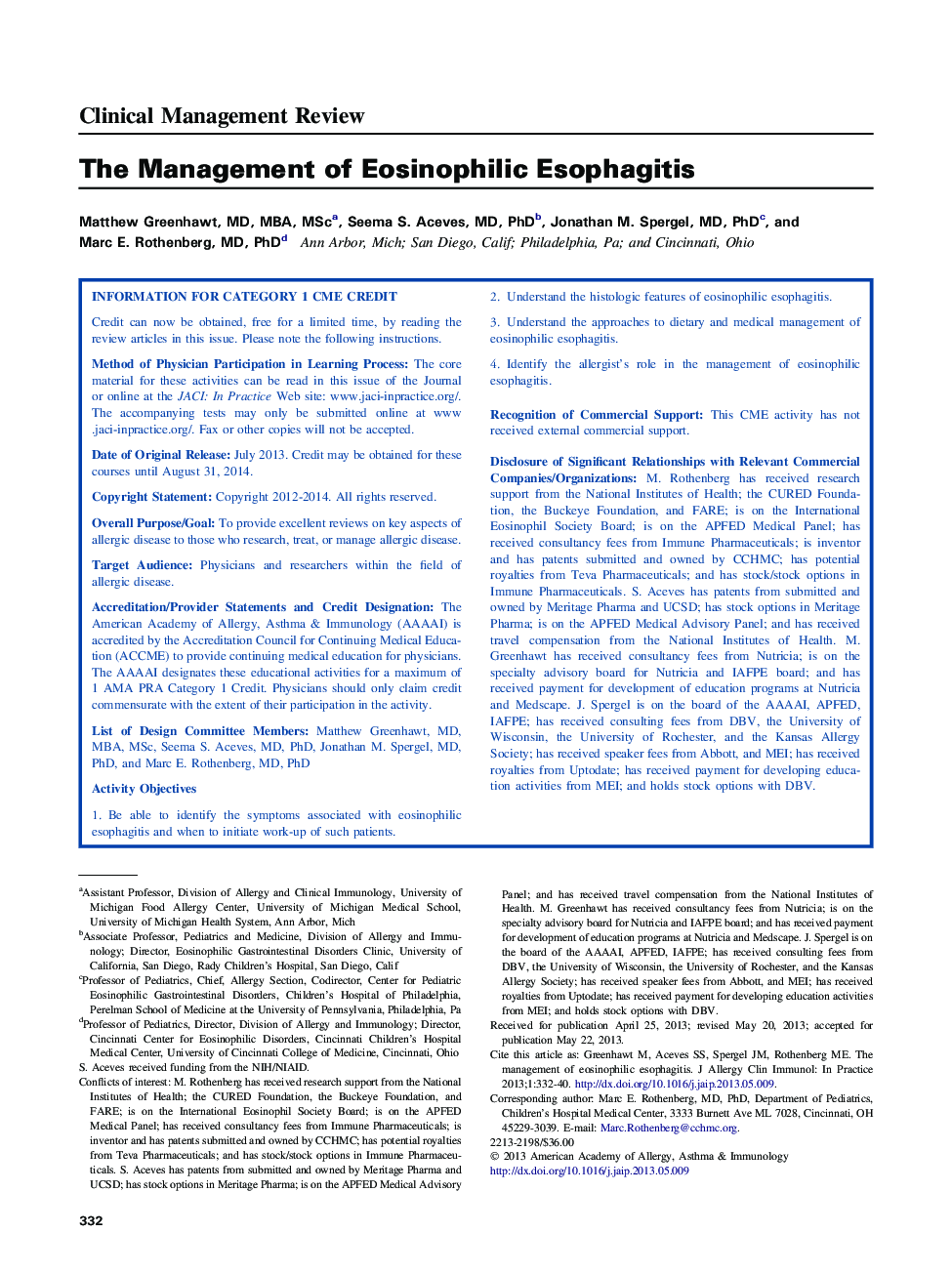| Article ID | Journal | Published Year | Pages | File Type |
|---|---|---|---|---|
| 3204449 | The Journal of Allergy and Clinical Immunology: In Practice | 2013 | 9 Pages |
Abstract
Eosinophilic esophagitis (EoE) is a clinicopathologic, chronic esophageal inflammatory disease resistant to acid suppressive therapy and is associated with variable symptoms indicative of upper gastrointestinal dysfunction. Per current guidelines established by The International Group of Eosinophil Researchers (TIGERS), the diagnosis is made in symptomatic patients after a biopsy that confirms a peak eosinophil level of â¥15 eosinophils/high-powered field (HPF). The esophagus is distinguished by pronounced tissue eosinophilia in which dietary antigens are key inciting factors for disease pathogenesis; EoE being reversed by elimination of triggering food allergens suggests that the disease is mediated in part by allergic sensitization to foods. Moreover, experimental EoE in mice can be induced not only via food exposure but also via aeroallergen exposure. Consistent with an allergic etiology rather than an acid-induced esophagitis, swallowed glucocorticoids are effective for the treatment of EoE. Evaluation by an allergist is a recommended part of the diagnostic workup, especially for management of allergic comorbidities. Clinical practice for the evaluation of patients with EoE mainly relies on prick skin tests due to the ease and validation of these tests in the context of immediate hypersensitivity. However, both atopy patch testing and serum IgE testing have been used in EoE. Herein, we reviewed the basic clinical features of EoE with a focus on the approach to diagnosing causative food allergens and to dietary therapy.
Keywords
QOLGERDNLREGDPLREoETGFproton pump inhibitor–responsive esophageal eosinophiliaPSTOCshpfAPTPPVPPITCSSFEDOVBPrick skin testQuality of lifeAtopy patch testAtopy patch testingEosinophilpositive predictive valuenegative predictive valueEoE, Eosinophilic esophagitisesophagogastroduodenoscopyimmunoglobulin Tigersgastroesophageal reflux diseasetransforming growth factorskin testingGastrointestinalelemental dietsix-food elimination dietElimination dietFluticasone propionatedietary managementNPV یا negative predictive valueProton pump inhibitorhigh-powered fieldpositive likelihood rationegative likelihood ratiotopical corticosteroids
Related Topics
Life Sciences
Immunology and Microbiology
Immunology
Authors
Matthew MD, MBA, MSc, Seema S. MD, PhD, Jonathan M. MD, PhD, Marc E. MD, PhD,
